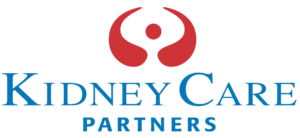Taking Positive Steps to Improve Home Dialysis, Transplant, and Patient Safety
May 8, 2023
Over the last few years, home dialysis, transplant access, and patient safety have emerged as major objectives of the Biden Administration. Yet, current quality performance measures used by federal regulators fall short in addressing safety concerns and barriers to transplant and home dialysis access – which is why Kidney Care Partners and other members of the kidney care community are taking action.
The Kidney Care Quality Alliance (KCQA) – a quasi-independent sister organization to KCP – creates evidence-based, empirically sound, and community-supported dialysis facility-level performance measures for use in federal end-stage renal disease (ESRD) programs. To further this mission, KCQA recently developed measure sets for use in the areas of home dialysis and transplant. It also developed recommendations to improve metrics that measure bloodstream infections, which is a significant patient safety issue.
Home Dialysis
In a letter to the Centers for Medicare & Medicaid Services (CMS), KCP called for the adoption of two patient-centered measures to promote home dialysis:
- Home Dialysis Measure Rate: Assesses the utilization of home dialysis modalities among patients within a given dialysis facility or hospital referral region. If implemented, this measure would incentivize providers to identify appropriate candidates for home dialysis.
- Home Dialysis Retention Measure: Evaluates retention on home dialysis among new home dialysis patients, allowing providers to ensure their home dialysis programs are growing sustainably.
These empirically sound measures will promote steady, deliberate performance improvement over time. By addressing both uptake and retention, the set minimizes the potential adverse consequences of unchecked financial incentivization of home dialysis growth, preserving and protecting patient choice and allowing providers to more readily assess the success of their efforts to create a sustainable home program.
Transplant
Given that the best treatment option for patients living with ESRD is often a kidney transplant, KCQA also developed a measure set to evaluate barriers in the transplant system and has written to CMS asking it to adopt these measures for its ESRD quality programs as well.
- Transplant Waitlisting Plus Referral Measure: Calculates the percent of all dialysis patient-months attributed to a dialysis facility during the measurement year in which the patient is already on the kidney transplant waitlist or has a documented referral to a transplant center for evaluation.
- Percent Waitlisted Among Referred Measure: Determines the percentage of dialysis patients who have a documented referral to a transplant center who were placed on the kidney waitlist.
Unlike current metrics, this measure set focuses specifically and appropriately on the action along the transplant evaluation continuum under the dialysis facility’s control—referrals. And because the waitlisting measure is limited to those patients who were deliberately referred by the treating facility, dialysis facilities have considerably more agency over the measure than existing waitlisting metrics.
Infection Prevention
In a separate letter to the Centers for Disease Control and Prevention (CDC), KCQA and KCP outlined changes to improve the ability of facilities to report bloodstream infections. The letter highlighted the kidney community’s concerns about the reliability and validity of the current measure.
The KCQA recommendations about changes in how the measure is fielded would streamline survey reporting, eliminate the monthly reporting plan requirement, and have the CDC system distinguish between acute kidney injury (AKI) and ESRD infections. These changes would address the issues with the current measure that have adversely impacted validity and reliability. If implemented, these changes would allow individuals to rely on reported outcomes to make well-informed care decisions. Likewise, providers could more accurately target and address identified performance issues to reduce infections and improve patient safety.
KCP encourages federal regulators to implement these measure sets, which are good for federal ESRD programs and, most importantly, good for patients. We look forward to meeting with federal regulators and sharing more about how these measure sets will support patients living with kidney disease.
